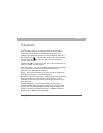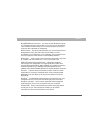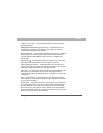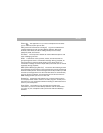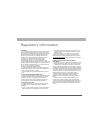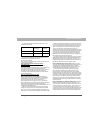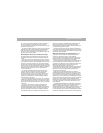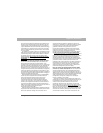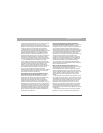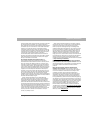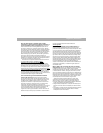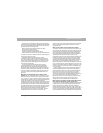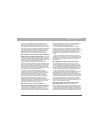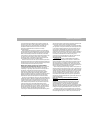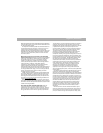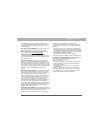
Using Your Treo 700P Smartphone 291
Regulatory information
“Grant of Equipment Authorization” for your telephone should
appear. Read through the grant for the section on “SAR
Compliance,” “Certification of Compliance with FCC Rules for RF
Exposure” or similar language. This section should contain the
value(s) for typical or maximum SAR for your smartphone.
Smartphones and other products authorized since June 2,
2000, should have the maximum SAR levels noted directly on the
“Grant of Equipment Authorization.” For smartphones and
products authorized between about mid-1998 and June 2000,
detailed information on SAR levels is typically found in the
exhibits associated with the grant. Once a grant is accessed, the
exhibits can be viewed by clicking on “View Exhibit.” Grants
authorized prior to 1998 are not part of the electronic database
but, rather, have been documented in the form of paper records.
The FCC database does not list smartphones by model
number. However, consumers may find SAR information from
other sources as well. Some wireless smartphone manufacturers
make SAR information available on their own Web sites. In
addition, some non-government websites provide SARs for
specific models of wireless smartphones. However, the FCC has
not reviewed these sites and makes no guarantees of their
accuracy. Finally, smartphones certified by the Cellular
Telecommunications and Internet Association (CTIA) are required
to provide SAR information to consumers in the instructional
materials that come with the smartphones.
Do hands-free kits for wireless smartphones reduce
risks from exposure to RF emissions? Since there are no
known risks from exposure to RF emissions from wireless
smartphones, there is no reason to believe that hands-free kits
reduce risks. Hands-free kits can be used with wireless
smartphones for convenience and comfort. These systems
reduce the absorption of RF energy in the head because the
smartphone, which is the source of the RF emissions, will not be
placed against the head. On the other hand, if the smartphone is
mounted against the waist or other part of the body during use,
then that part of the body will absorb more RF energy. Wireless
smartphones marketed in the U.S. are required to meet safety
requirements regardless of whether they are used against the
head or against the body. Either configuration should result in
compliance with the safety limit.
Do wireless smartphone accessories that claim to
shield the head from RF radiation work? Since there are no
known risks from exposure to RF emissions from wireless
smartphones, there is no reason to believe that accessories that
claim to shield the head from those emissions reduce risks.
Some products that claim to shield the user from RF absorption
use special smartphone cases, while others involve nothing more
than a metallic accessory attached to the smartphone. Studies
have shown that these products generally do not work as
advertised. Unlike “hand-free” kits, these so-called “shields” may
interfere with proper operation of the smartphone. The
smartphone may be forced to boost its power to compensate,
leading to an increase in RF absorption. In February 2002, the
Federal trade Commission (FTC) charged two companies that
sold devices that claimed to protect wireless smartphone
users from radiation with making false and unsubstantiated
claims. According to FTC, these defendants lacked a reasonable
basis to substantiate their claim.
What are wireless telephone base stations? Fixed
antennas used for wireless telecommunications are referred to as
cellular base stations, cell stations, PCS (“Personal
Communications Service”) stations or telephone transmission
towers. These base stations consist of antennas and electronic
equipment. Because the antennas need to be high in the air, they
are often located on towers, poles, water tanks, or rooftops.
Typical heights for freestanding base station towers are 50-
200 feet.
Some base stations use antennas that look like poles, 10 to 15
feet in length, that are referred to as “omni-directional” antennas.
These types of antennas are usually found in rural areas. In urban
and suburban areas, wireless providers now more commonly
use panel or sector antennas for their base stations. These
antennas consist of rectangular panels, about 1 by 4 feet in
dimension. The antennas are usually arranged in three groups
of three antennas each. One antenna in each group is used to
transmit signals to wireless smartphones, and the other two
antennas in each group are used to receive signals from wireless
smartphones.
At any base station site, the amount of RF energy produced
depends on the number of radio channels (transmitters) per



